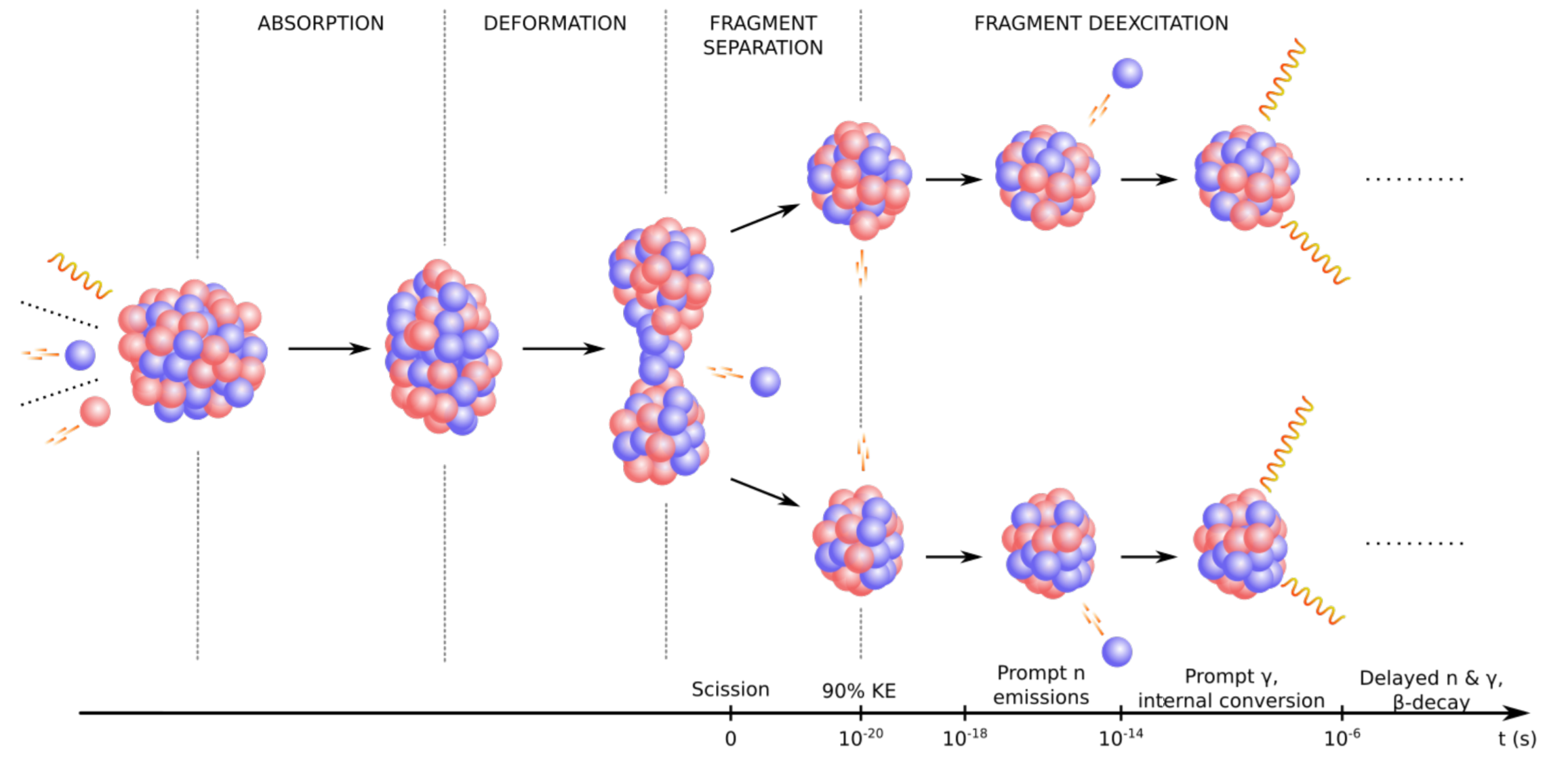Superheavy elements in the $r$-process

LA-UR-19-XXXXX
Matthew Mumpower
SuperHeavy Elements Hakone, Japan
Monday Dec. 2$^{nd}$ 2019

Center
for Theoretical
ASTROPHYSICS
Understanding of the formation of the elements
One of the grand challenges of our time
The theoretical modeling of astrophysical environments
Multi-messenger observations (gravitational waves, EM waves, etc.)
Nuclear theory predictions for exotic nuclei
Precision experiments to constrain nuclear theory
Data and observations are limited
We must be clever when deciphering what is going on with nucleosynthesis...

What is the $r$-process?


The rapid neutron capture process is a cosmic factory for the production of heavy elements
Neutron captures are initially much faster than $\beta$-decays
Astrophysical environment must produce a lot of free neutrons
How far in proton number can this process proceed?...
Where can the $r$-process occur?
One possibility is in (rare?) supernovae


For standard supernovae (left) neutrino physics still needs to be well understood
Jets in magnetorotational driven supernovae (right) may also provide the necessary conditions
Another option is the disk winds of collapsars - black hole forms after core collapse of a rapidly rotating star
Where can the $r$-process occur?
Another possibility is in compact object mergers

A binary merger of neutron stars is an exciting possibility (some indirect evidence exists)
Another option is in the disk of a black hole neutron star binary
Superheavy element production

Maximum heavy element production from tidal ejecta of a neutron star merger
A wide range of transuranic elements with some transactinide production is possible
Among other things, the details of SHE production depend on how the $r$-process terminates via nuclear fission
Nuclear fission for the $r$-process

Influence on the $r$-process:
Fission rates and branching determine re-cycling (robustness)
Fragment yields place material at lower mass number; barriers determine hot spots
Large Q-value ⇒ impacts thermalization and therefore possibly observations
Responsible for what is left in the heavy mass region when nucleosynthesis is complete ⇒ "smoking gun"
Fission Barrier Heights (FRLDM)

(Maximum) FRLDM Barrier heights
Low barrier ↦ fission ⇑
$r$-process hot spots follow low barriers
Neutron-induced fission

Use statistical Hauser-Feshbach for competition between neutrons, $\gamma$s and fission
Barrier heights Möller (2015) / FRDM2012 masses
Large region that will fission cycle $r$-process
$\beta$ -delayed fission

We have recently extended our QRPA+HF model to describe $\beta$-delayed fission ($\beta$df)
Recall: Near the dripline $Q_{beta}$ ⇡ $S_{n}$ ⇣
Multi-chance $\beta$df: each daughter may fission
Mumpower et al. ApJ (2018) • Möller et al. ADNDT 125 (2019) • Yokoyama et al. PRC (2019)
Cumulative $\beta$ df probability

$\beta$df occupies a large amount of real estate in the NZ-plane
Multi-chance $\beta$df outlined in black
Superheavies in the $r$-process

Network calculation of tidal neutron star merger ejecta
$\beta$df alone may prevent the pathway from neutron-rich nuclei to the island of stability
Fission yields across the chart of nuclides

We have calculated macro-micro fission yields across the chart of nuclides - including superheavies
Width of the mass distribution, $Y(A)$, shown above for each fissioning system - remarkable structure arises
Width of yield distributions increase with neutron-excess
Impact of new fission yields

Abundance output using common old nuclear fission data and our new model predictions
Co-production of light nuclei from $Z\sim 45$ to the actinides (dynamical merger ejecta only!)
Is there a way to observe SHE in light curves?

Can we prove that very heavy elements nucleosynthesis has occurred in an event?... Maybe!
The spontaneous fission of $^{254}$Cf can be a primary contributor to nuclear heating at late-time epochs
The $T_{1/2}\sim 60$ days; found from nuclear weapons testing
Vassh et al. J. Phys. G (2019)
Production of $^{254}$Cf(Z=98)


Primary feeder seems to be from $\beta$-decay
Production of this nucleus been explored over a range of nuclear models; some high - some low
Remains to be seen if we can disentangle from other energy sources (e.g. puslar or accreetion fallback)
Observational Impact of Californium


Both near- and middle- IR are impacted by the presence of $^{254}$Cf
Late-time epoch brightness can be used as a proxy for heavy element nucleosynthesis
Future JWST will be detectable out to 250 days with the presence of $^{254}$Cf
This also has implications for merger morphology...
Special thanks to
My collaborators
J. Dolance, W. Even, C. Fontes, C. Fryer, E. Holmbeck, A. Hungerford, P. Jaffke, T. Kawano, O. Korobkin, J. Lippuner, G. C. McLaughlin, J. Miller, W. Misch, P. Möller, J. Randrup, T. Sprouse, R. Surman, N. Vassh, M. Verriere, R. Vogt, R. Wollaeger, Y. Zhu
& many more...
▣ Student ▣ Postdoc ▣ CTA Staff ▣ FIRE PI
Summary
Production of superheavy elements in the $r$-process still remains an open question
The solution will require a coordinated, multi-disciplinary effort
Recent calculations show a wide range of transuranic and some transactinide production in low $Y_e$ ejecta
$\beta$-delayed fission may terminate pathways from neutron-rich nuclei to the island of stability
Influential, late-time nuclei such as $^{254}$Cf may provide insight into SHE production in nature
Currently: more theoretical effort, experiments, and observations are needed!
Results / Data / Papers @ MatthewMumpower.com
